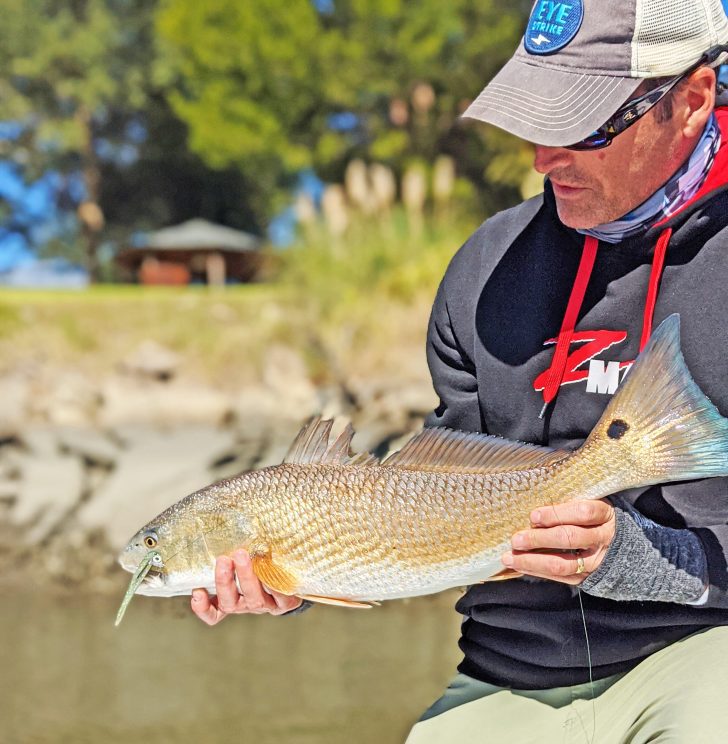Each year, a group of friends and I rent an AirBNB on the water and have a “guys weekend” full of fishing, cooking and a little beer drinking.
Over the years, the group has changed and includes an interesting mix of different people.
It has become a group who otherwise might have never met but have become all good friends over the years.
Understandably, a good portion of them aren’t the most experienced at fishing, much less with artificial lures.
I always step into the role of fishing coach on our trips and try to offer help on how to present the lure so they have some luck.
I also watch carefully to try to understand why they aren’t catching, if I can. Sometimes, the fish won’t cooperate, no matter who you are!
Always, by the end of the trip, and year-to-year, I can see their skills get better each time.
On our first outing last year, we were working a typical creek lined with docks and piers. I was showing them where fish were likely to be and where to cast.
At each “spot” I gave them first shot at it. But in short time, I had an inshore slam, and my guests had nothing. Why?
We were using similar rods and reels, and often the same jig head and soft plastic lure.
To be successful at using artificial lures, it’s all in the details. Based on my observations on this trip, the number one reason was casting accuracy.
My guests simply were not able to hit the spot needed to present the lure to where a fish was likely to be.
I’d say, in order to be successful, you need to be able to hit a spot the size of a 3 foot diameter circle with good regularity.
If you can’t do it the first time, every time, then if you can do it within 2 or 3 tries, that’s good enough.
Obviously, get that accuracy down to the size of a dinner plate, and all the better.
Here are two scenarios where it really mattered that day. It was a bright, sunny early November day, and the water was still a little warm.
We pulled up to a dock with a steep, rubble filled bank. I pointed out a shadowy area between the bank and the first piling.
I asked my guests to cast there, and, they couldn’t hit it after several tries.
I made a cast and thread it between the dock and bank, let it drop for a second and … 27” redfish.
Scenario 2, we were fishing that same pattern with very good success (that’s a topic for another article) and came to a dock with a similar bank, but a floating dock running parallel to shore.
After working the floater with no luck, I slipped my Sportsman bay boat between the floater and the bank.
I instructed my guests to cast under the pier in the shadow. Again, they struggled to hit the spot.
I made a cast in the intended spot and found a school of puppy red drum in there.
My point is that it’s one thing to know where to cast, but you need to be able to hit it. You can practice in your living room or back yard at any time.
Being an accurate caster can make the difference between no fish, and dozens of fish.
And, my guests?
They all caught plenty of fish with a few days of on-the-water practice.
Next time, they will arrive rusty, but will pick up where they left off in short order. They will lose a few jigs in the meantime, but luckily I know someone in the business!
David Fladd
Partner, Eye Strike Fishing
dfladd@eyestrikefishing.com
eyestrikefishing.com
You may also enjoy reading Are We Losing Our Flounder In South Carolina?






